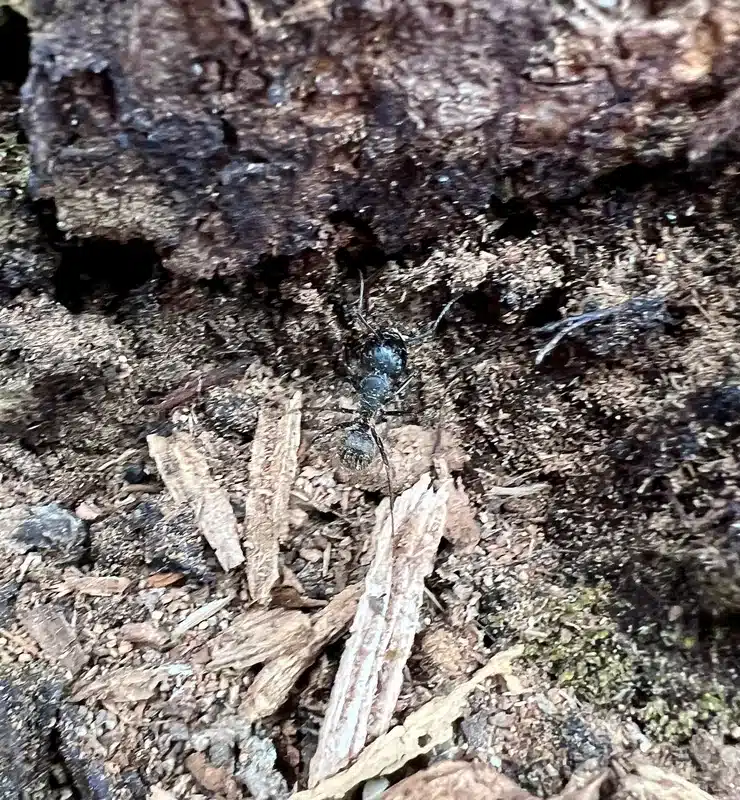Finding signs of carpenter ant damage early can save you thousands in repair costs. Over my four years as a registered technician, I’ve seen how carpenter ant damage starts small but grows into major structural problems when homeowners miss the warning signs.
In the DMV area, carpenter ants are particularly common because of our humid summers and frequent moisture issues around foundations. These large black ants don’t eat wood like termites, but they burrow into wood to create their nests, causing significant damage over time.
Recognizing carpenter ant damage isn’t always obvious. Unlike termite damage, carpenter ants create clean, smooth galleries and leave telltale signs that trained eyes can spot. Let me walk you through exactly what to look for.
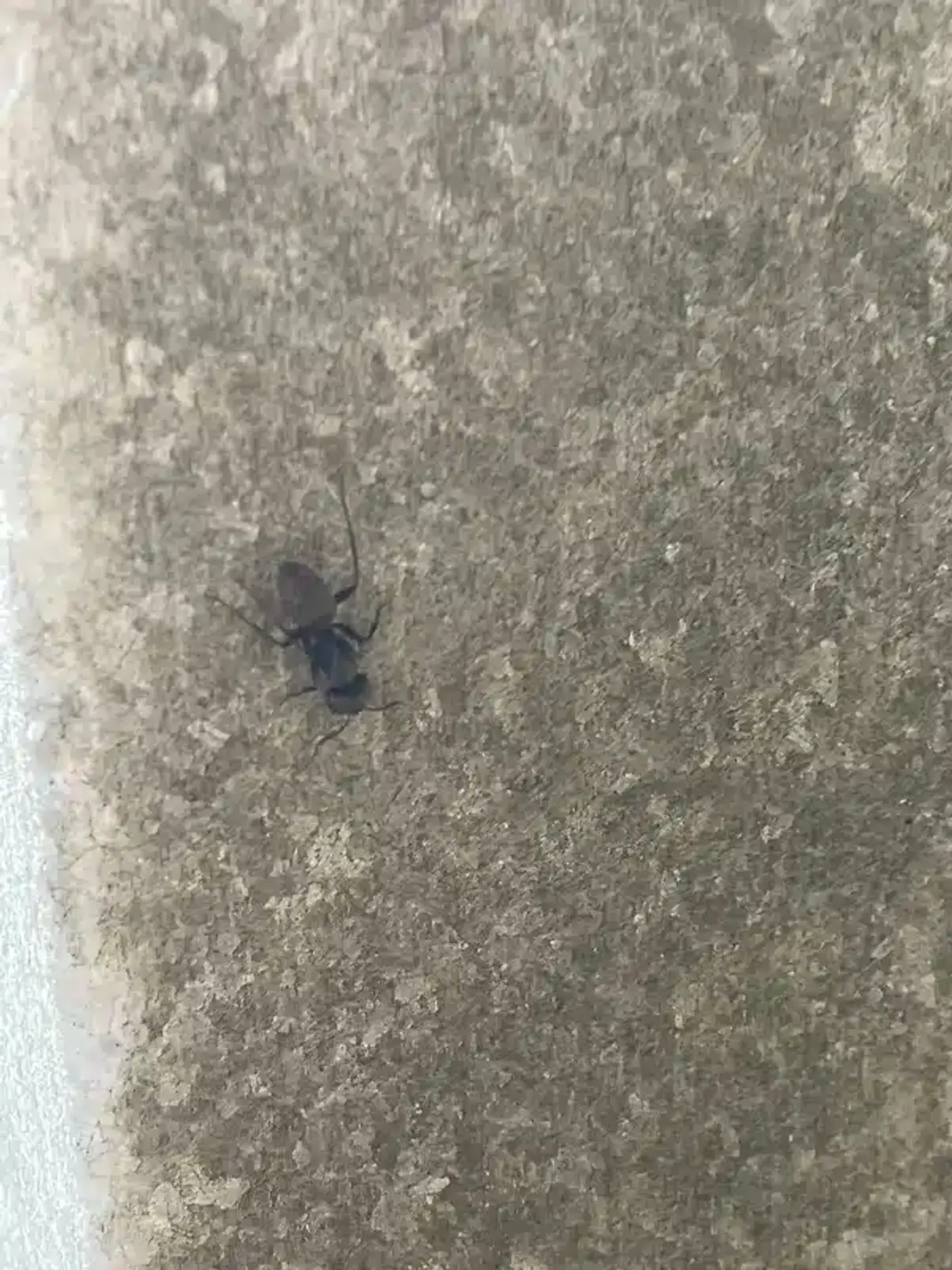
Visual Signs of Carpenter Ant Damage
The most obvious sign of carpenter ant damage is finding piles of sawdust or wood shavings around your home. This material, called frass, looks like coarse pencil shavings mixed with insect parts and debris.
Carpenter ants create small slit-like openings in wood surfaces to eject this frass. These kick-out holes are typically 2-3 millimeters wide and appear on wood faces or behind trim pieces.
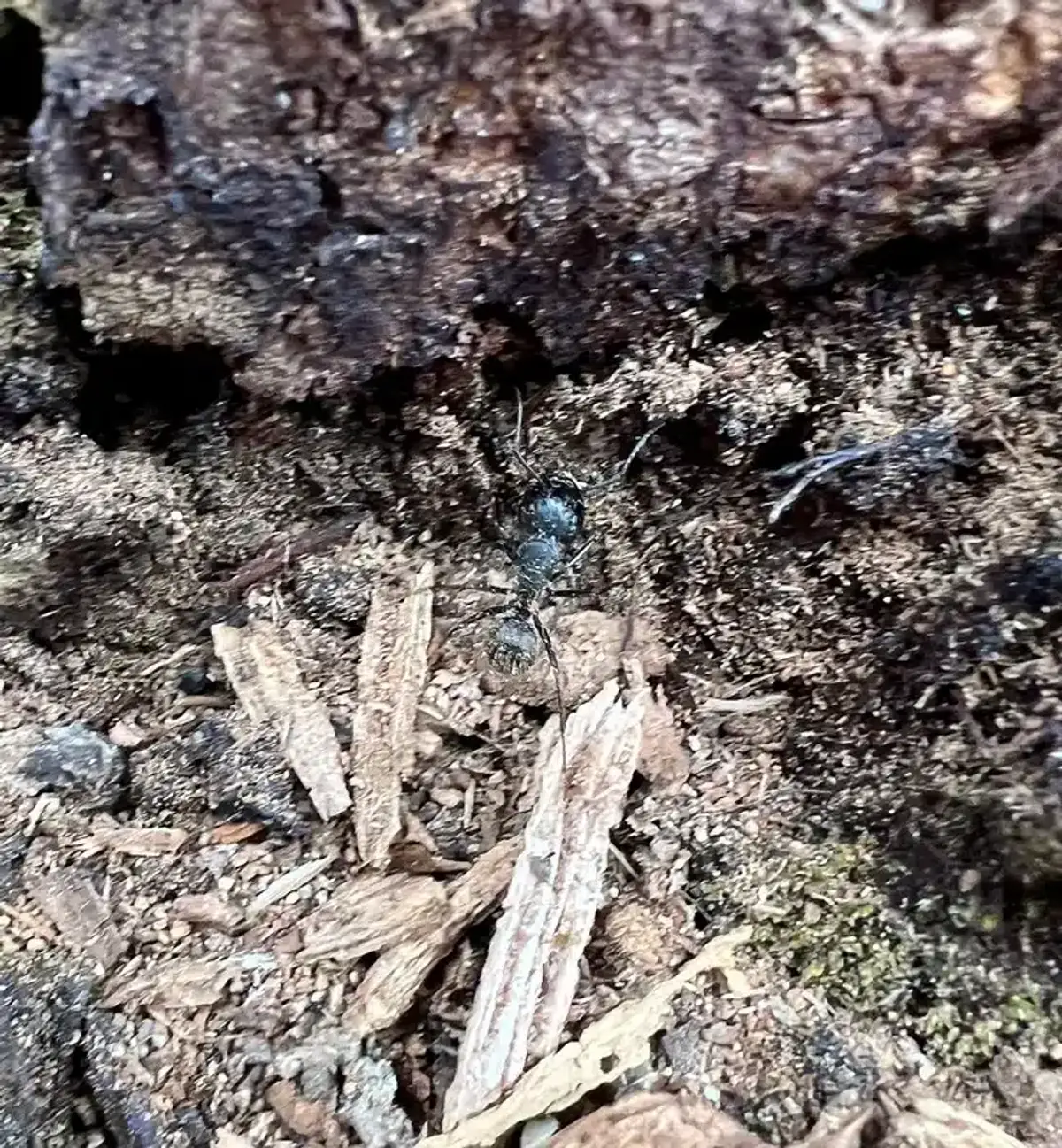
Frass and Wood Shavings
Carpenter ant frass is distinctly different from other pest debris. The piles of wood shavings contain stringy fragments that look like they came from a pencil sharpener, often mixed with insulation fibers or seed coats.
You’ll typically find these piles directly below kick-out holes, beneath porch beams, or on basement sill plates. Sometimes spider webs catch the frass, making it easier to spot.
Kick-Out Holes and Entry Points
Worker ants use these small slits to remove debris and exit for nighttime foraging. The holes appear clean and precise, unlike the irregular damage caused by other wood-boring insects.
Carpenter ants prefer to nest in moist or decaying wood, so look for these openings near areas with water damage or moisture problems.
Moisture Damage Indicators
Because carpenter ant colonies require wood with moisture content above 15%, you’ll often see water staining, fungal decay, or blistered paint near active nests. These moisture indicators almost always appear before the ants arrive.
In our DMV climate, roof leaks and poor drainage create perfect conditions for carpenter ants. Areas around window sills, porch columns, and foundation sill plates are particularly vulnerable.
Sounds That Indicate Carpenter Ant Activity
Many homeowners overlook the auditory clues of carpenter ant damage. During my inspections, I often hear carpenter ants at work before I see them.
The sound resembles dry rustling or crinkling cellophane, sometimes with soft chewing clicks. These noises are loudest after sunset when worker ants are most active.

Rustling and Scratching Noises
Worker ants scrape their mandibles and legs against gallery walls as they excavate. When disturbed, they drum their abdomens and mandibles to alert nestmates.
You can hear these sounds up to about 10 feet away through drywall in quiet rooms. Try pressing a drinking glass to suspect wall studs during late evening hours - it works like a stethoscope.
When Sounds Signal Serious Problems
If you hear rustling sounds in load-bearing beams or floor joists, this indicates significant damage that needs immediate attention. Active carpenter ant sounds in structural members suggest the colony has been present for years.
Multiple sound sources in different rooms typically mean several satellite nests are active, indicating a well-established infestation of carpenter ants.
Structural Carpenter Ant Damage
Unlike termites, carpenter ants burrow into wood to create galleries that follow and cross the wood grain. The damage appears irregular but has distinctly smooth walls that look “sanded.”
When you tap damaged wood, it sounds hollow. A knife or awl penetrates easily along the grain in heavily infested areas.
Early Structural Warning Signs
Carpenter ants can cause significant structural damage when left untreated. Early signs include:
- Hollow-sounding timber when tapped
- Soft spots in wooden structural elements
- Windows or doors becoming difficult to open
- Slight sagging in floors or ceiling beams
In severe cases, structural damage becomes apparent when more than 20% of a load-bearing member is hollowed out. This creates dangerous conditions that require immediate professional intervention.
Critical Structural Warning Signs
- Hollow Sound: Load-bearing beams that sound hollow when tapped indicate significant carpenter ant damage.
- Easy Penetration: Wood that accepts a knife or awl easily along the grain shows extensive tunneling.
- Structural Movement: Sagging floors, ceiling beams, or doors/windows out of square.
- Emergency Action: Any combination of these signs requires immediate professional pest control intervention.
Advanced Damage Indicators
Carpenter ants often tunnel through insulation, leaving galleries riddled throughout foam boards. Finding styrofoam beads in frass piles signals this type of extensive damage.
Spongy thresholds and windows out of square indicate that carpenter ants have compromised critical support structures. This level of damage typically takes several years to develop.
Carpenter Ant vs Other Pest Damage
Distinguishing carpenter ant damage from other wood pests is crucial for proper treatment. Each pest leaves distinctive signs that help identify the problem.
Having inspected thousands of homes over 50+ years as a family business, we’ve learned to quickly differentiate between various types of wood damage.
| Pest Type | Damage Pattern | Debris Type | Speed of Damage |
|---|---|---|---|
| Carpenter Ants | Clean, smooth galleries | Coarse wood shavings | Gradual (years) |
| Termites | Honeycomb pattern | Mud tubes & pellets | Rapid (months) |
| Powderpost Beetles | Pin-sized holes | Fine, floury dust | Very slow (decades) |
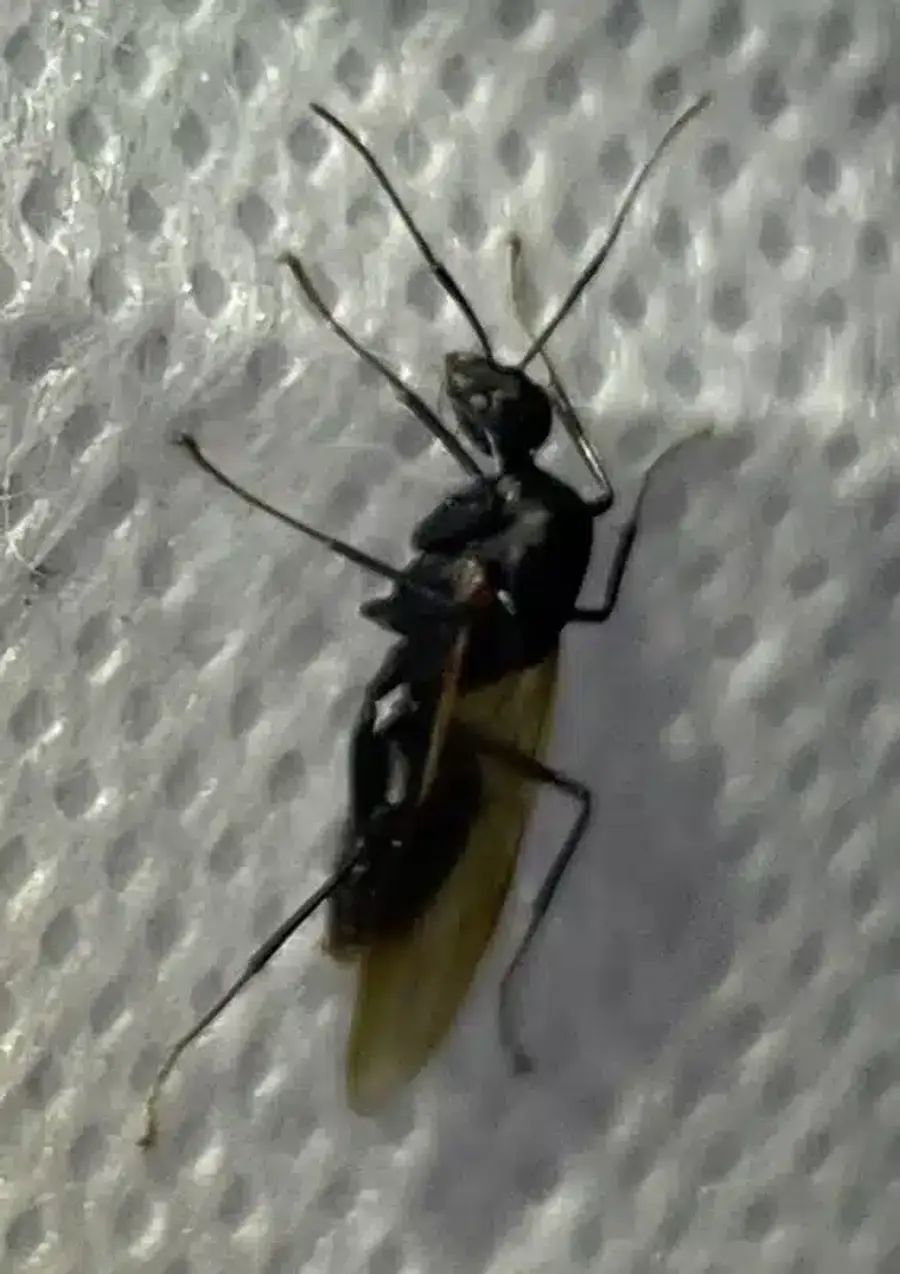
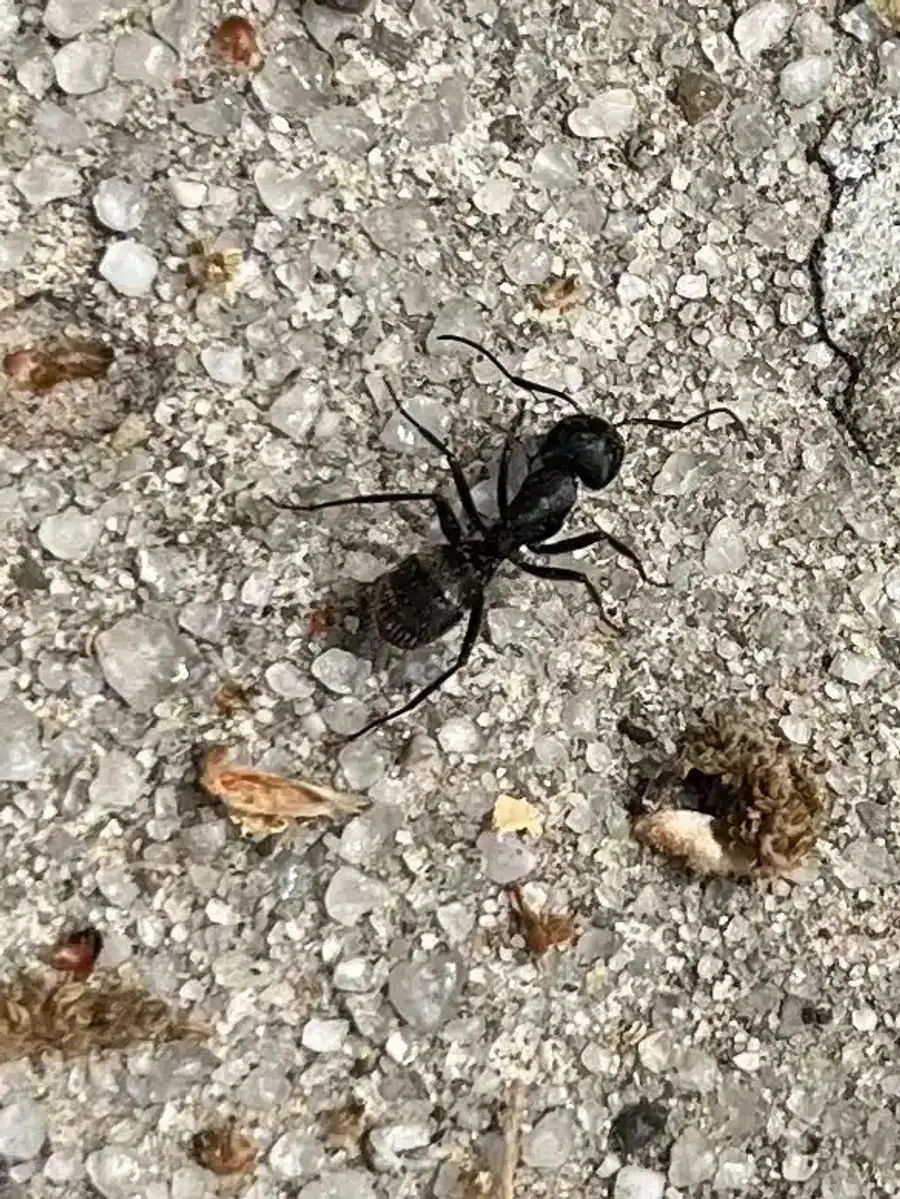
Carpenter Ants vs Termites
The key difference is that carpenter ants don’t eat wood like termites. Instead, they excavate clean galleries while termites pack their tunnels with mud or leave six-sided fecal pellets.
Termite damage typically appears faster and more extensively than carpenter ant damage, but both can cause extensive damage if left untreated.
What does the science say?
According to NC State Extension research, termite galleries follow soft spring-wood layers, creating a distinctive honeycomb pattern. This differs significantly from carpenter ant damage, which appears more irregular but maintains characteristically smooth walls that look “sanded.” The research confirms that proper identification between these two wood pests is critical for effective treatment strategies.
Distinguishing from Powderpost Beetles
Powderpost beetles create tiny pin-sized holes (1/32 to 1/8 inch) and produce talc-like frass. They don’t create the large slit openings or coarse wood shavings that carpenter ants leave behind.
Active powderpost beetle infestations produce fresh, floury dust within 24 hours of cleaning, while carpenter ant frass accumulates more slowly.
Other Ant Species Comparison
Field ants create soil mounds outdoors and rarely damage structures. Acrobat ants use existing voids and leave fine sawdust without the insect parts found in carpenter ant frass.
Carpenter ants are among the largest ants in North America, with their characteristic smoothly arched thorax and single node between the thorax and abdomen.
Assessing Carpenter Ant Infestation Severity
Not all carpenter ant activity poses the same threat level. Understanding severity helps determine whether you need immediate action or can plan treatment strategically.
After seeing countless infestations, certain signs immediately tell me when carpenter ants have moved from nuisance to serious threat.
High-Risk Damage Indicators
The presence of winged ants indoors indicates a colony that’s at least three years old with thousands of workers. This represents a significant threat to structural integrity.
Multiple frass piles in different rooms or levels suggest several satellite nests. This indicates a mature carpenter ant infestation that’s had time to establish multiple colonies throughout the structure.
What does the science say?
According to Colorado State Extension research, mature carpenter ant colonies can cause significant structural damage when they establish multiple satellite nesting sites throughout a building. The research indicates that mature colonies contain 10,000-15,000 workers and can remain active for 3-6 years before producing winged reproductives, making early detection and treatment crucial for preventing extensive damage.
Moderate Risk Situations
Seasonal ant sightings with trails leading outdoors typically indicate lower damage risk. The main nest remains outside, reducing immediate structural threats.
Single frass piles that don’t reform quickly after cleanup suggest smaller, newer colonies that haven’t established extensive tunnel systems.
Emergency Situations
Rustling sounds audible in load-bearing beams warrant immediate structural evaluation. This indicates that carpenter ants have compromised critical support elements.
Any carpenter ant activity combined with sagging wood, structural movement, or hollow-sounding major beams requires emergency intervention to prevent catastrophic damage.
When to Take Immediate Professional Pest Control Action
Certain situations demand immediate professional intervention to protect your home from extensive structural damage. Recognizing these triggers can save you tens of thousands in repair costs.
Based on my experience inspecting homes throughout Virginia, Maryland, and DC, these warning signs indicate that carpenter ants pose an immediate threat.
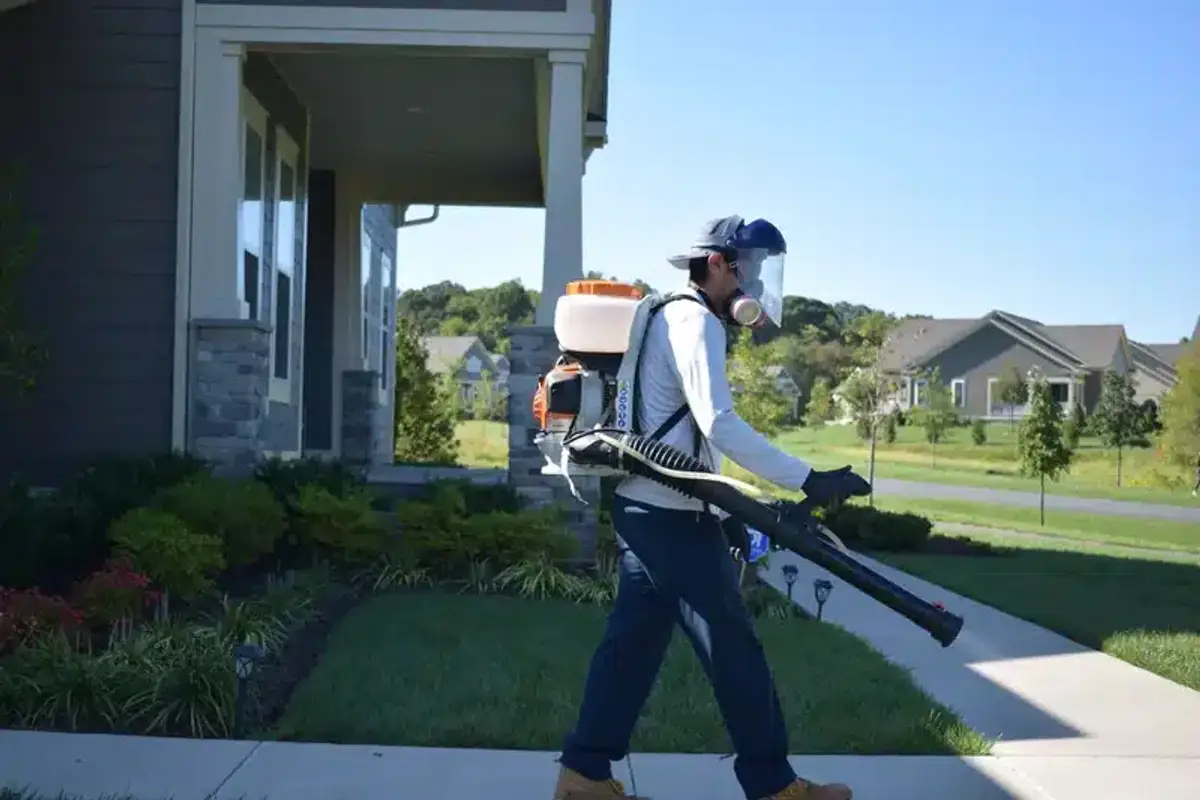
Critical Warning Signs
Call for immediate professional pest control if you observe:
- Large winged ants emerging inside between March and June
- Any frass pile that reforms within a week of cleanup
- Audible rustling or chewing sounds at night in multiple wall voids
- Wood framing that sounds hollow or accepts a screwdriver easily
- Recurring moisture problems in areas with active ant trails
These signs indicate that carpenter ants have established mature colonies and are actively expanding their tunnel systems.
Why Quick Action Matters
Carpenter ant damage progresses steadily but not explosively. However, ignoring these warning signs allows colonies to grow and establish multiple satellite nests.
What starts as minor cosmetic damage can evolve into structural problems requiring expensive beam replacement or foundation repairs. Early intervention typically costs a fraction of major structural restoration.
Professional Assessment Benefits
Our registered technicians can distinguish between active and old damage, locate primary nest sites, and identify contributing moisture problems.
Professional pest control companies use specialized tools like moisture meters and borescopes to assess damage extent without destructive exploratory work.
Carpenter Ant Prevention and Long-Term Pest Control
Preventing carpenter ant damage focuses on eliminating the moisture conditions that attract these pests in the first place. Our family business has learned that moisture control is the foundation of effective ant prevention.
The Virginia Cooperative Extension notes that carpenter ants require moisture-damaged wood to establish their primary nests, making moisture control essential.
Moisture Management Strategies
Address these common moisture sources to protect your home:
- Repair roof leaks and damaged flashing immediately
- Ensure proper drainage around your foundation
- Fix plumbing leaks, especially around bathroom and kitchen areas
- Improve ventilation in crawl spaces and attics
- Replace any wood that stays consistently damp
In the DMV area’s humid climate, dehumidifiers in basements and crawl spaces often prevent the moisture buildup that carpenter ants prefer.
Regular Monitoring Techniques
Homeowners can monitor for early signs of carpenter ant activity using simple techniques. Check for frass piles monthly, especially during warm weather when ant activity peaks.
The “glass stethoscope” method works well for detecting early carpenter ant activity. Press a drinking glass against suspect walls during quiet evening hours to listen for rustling sounds.

Professional Prevention Programs
Our comprehensive pest control programs include tri-annual inspections (three times per year) that catch carpenter ant problems early. We use EPA-approved products that have passed through our internal research team.
Professional carpenter ant control typically involves both interior crack-and-crevice treatments and exterior perimeter applications. This approach targets both active colonies and prevents new infestations.
The key to successful carpenter ant removal is locating and treating the primary nest, which often requires professional expertise and specialized equipment.
Getting Professional Pest Control Help
When carpenter ant damage threatens your home’s structural integrity, professional intervention becomes essential. Our registered technicians bring over 50 years of experience dealing with carpenter ant problems throughout the DMV area.
Professional assessment can determine whether you’re dealing with an active infestation or old damage, saving you from unnecessary treatments and helping focus efforts where they’re most needed.
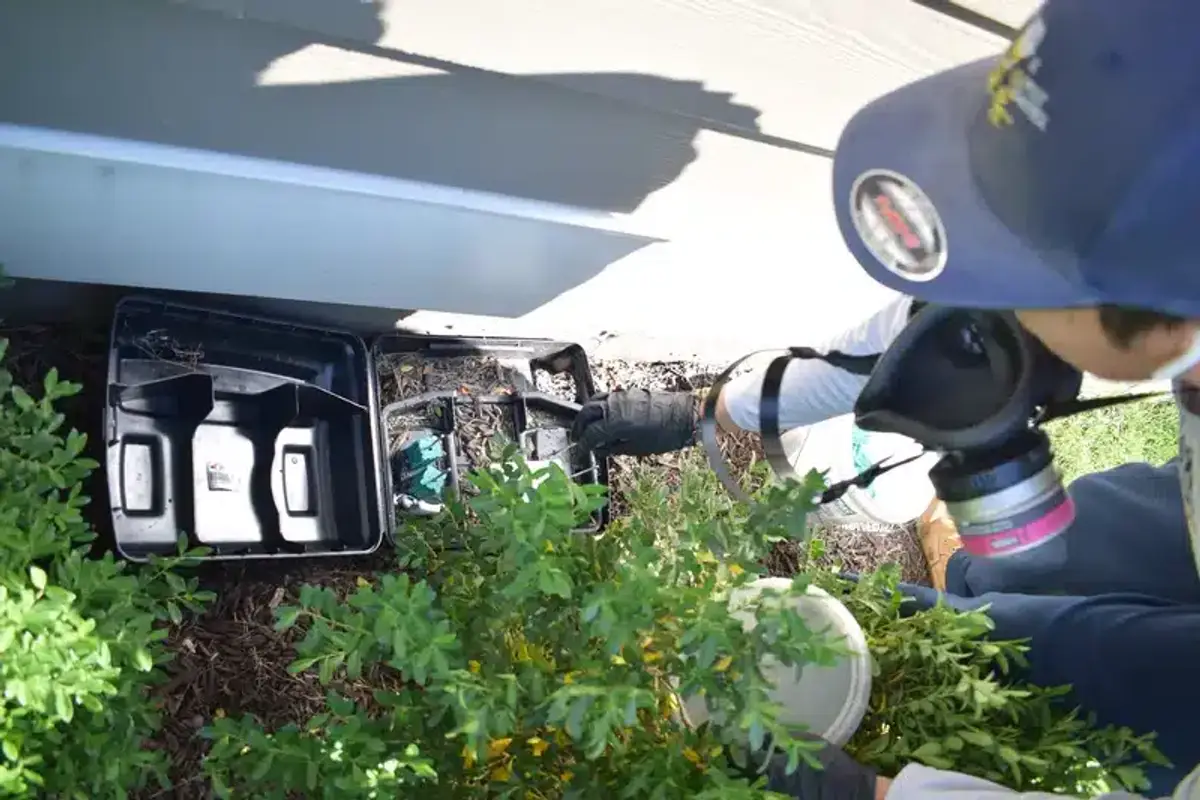
We’ve removed 9 of the harshest chemicals common in our industry, choosing better alternatives like Essentria and Alpine that are effective against carpenter ants while being easier on your family and pets.
Our approach focuses on finding and eliminating the source rather than just treating visible symptoms. This comprehensive method provides longer-lasting results and prevents recurring problems.
Case Study: When Sounds Led to Discovering Extensive Damage
During one of my inspections in Virginia, a homeowner mentioned hearing occasional “rustling” sounds in their living room walls during quiet evenings. What seemed like a minor concern led to discovering one of the most extensive carpenter ant infestations I’d seen in my four years as a registered technician.
- Initial complaint: Faint rustling sounds heard occasionally at night
- What we found: Multiple frass piles behind baseboards in three different rooms
- Extent of damage: Load-bearing beam with over 30% of wood hollowed out
- Contributing factor: Slow roof leak had created perfect moisture conditions for years
This case reinforced why I always tell homeowners not to ignore subtle signs - early detection can prevent structural damage that costs tens of thousands to repair.
If you’ve noticed any signs of carpenter ant damage around your home, don’t wait for the problem to escalate. Early detection and treatment can protect your home from significant structural damage and save you thousands in repair costs. Call us at 703-683-2000 or email info@bettertermite.com for a thorough assessment and customized treatment plan.
Frequently Asked Questions
How do I know if I have carpenter ant damage?
+
Look for piles of sawdust or wood shavings near wooden structures, small slit-like holes in wood surfaces, and hollow-sounding timber when tapped. You might also hear rustling sounds in walls during quiet evening hours. Carpenter ants create clean, smooth galleries unlike the mud-packed tunnels that termites leave behind.
How long does it take carpenter ants to damage a house?
+
Carpenter ant colonies grow slowly, taking 3-6 years to reach maturity. Significant structural damage typically develops over several years as colonies establish multiple satellite nests. However, damage to critical support beams can compromise structural integrity once more than 20% of the wood is hollowed out.
What does carpenter ant damage look like?
+
Carpenter ant damage appears as smooth, clean galleries carved into wood with walls that look "sanded." You'll see coarse wood shavings (frass) that resemble pencil sharpener tailings, often mixed with insect parts. The damage creates irregular but smooth tunnels that cross wood grain, unlike the honeycomb pattern that termites create.
Can you permanently get rid of carpenter ants?
+
Yes, carpenter ants can be eliminated permanently with proper treatment that targets both the primary nest and satellite colonies. Success requires locating and treating the main colony, addressing moisture problems that attract them, and ongoing monitoring. Professional treatment typically involves both interior and exterior applications for comprehensive control.
Do carpenter ants cause as much damage as termites?
+
Carpenter ants cause damage differently than termites but can be equally destructive over time. While termites consume wood as food, carpenter ants excavate galleries for nesting. Both can cause significant structural damage, but carpenter ant damage typically develops more slowly and leaves cleaner, more organized tunnels.
What attracts carpenter ants to my home?
+
Carpenter ants are attracted to moisture-damaged or decaying wood for nesting sites. Common attractants include roof leaks, plumbing problems, poor drainage around foundations, and areas with high humidity. They also forage for food sources like sugary substances and protein, which can lead them indoors even if their nest is outside.
When do carpenter ants swarm?
+
Carpenter ants typically swarm from March through June in the DMV area. Finding winged ants inside your home during this period indicates a mature colony that's been established for at least 3-6 years. This is a serious sign that requires immediate professional attention to prevent further structural damage.
Should I be concerned about carpenter ants I see occasionally?
+
Even occasional carpenter ant sightings warrant investigation, especially if you see large black ants indoors. While seasonal outdoor activity may be normal, indoor sightings often indicate a satellite nest in your home's structure. Early detection and treatment prevent minor problems from becoming major structural issues.
With five years of hands-on experience in the pest control industry, George Schulz is a registered technician with the Virginia Pest Management Association and a proud third-generation professional in a family business that's been protecting homes for over 57 years. He manages and trains a team of service pros while also leading internal research efforts—recently spearheading a deep-dive review of thousands of documents on pest control materials to hand-pick the most kid and pet friendly, most effective solutions tailored specifically for homes in the DC metro area.
